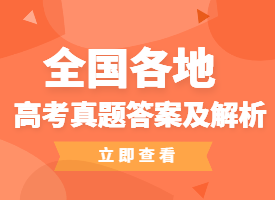高中英语考试传统文化32个考点素材
资源预览文档简介为自动调取,内容显示的完整度及准确度或有误差,请您下载后查看完整的文档内容。
第一部分:中国节日一.春节SpringFestival ⑴Itfallsonthefirstdayofthefirstlunarmonth(阴历正月).⑵Peoplefollowmanynationalandlocalcustoms.⑶Wepastespringpoems(贴春联)withluckwordsonthedoor.⑷Weeatdeliciousfoodwithsymbolicvalues(有象征意义的美味食品),forexample,chickenforgoodluck.⑸Weexchangegreetingswithfriendsandrelatives.⑹Peoplemaygivechildrenluckymoneyinredpaper.⑴阴历的正月初一是春节。⑵人们延续很多传统习俗。⑶我们在门上贴春联。⑷我们吃有象征意义的美味食品,比如鸡肉。⑸我们相互拜年问候。⑹人们给小孩压岁钱。二.元宵节theLanternFestival ⑴Itcomesonthe15th ofthefirstlunarmonth.⑵ItmarkstheendoftheSpringFestival.⑶Onthatday,peopleeatsweetdumplingsforgoodluck.⑷Specialactivitiesincludethedisplayoflanterns(灯笼)andriddlesolving(猜灯谜).,⑴元宵节在农历的正月十五。⑵它标志着春节的结束。⑶那一天,人们吃汤圆,以求吉祥如意。⑷有些特色的活动,比如观灯、猜灯谜。⑴ItisalsocalledTomb-SweepingDay.ItcomesonApril4th or5th .⑵InChineseQingmingmeans“clearandbright”.⑶Itisadayforthelivingtoshowloveandrespecttodeadfrends, relativesandancestors.⑷Peoplewillsweepthetombs,lightincense,putmeats,vegetables,wineinfrontofthetomb.⑸Besides,peopleburnpapermoneyforthedeadtouseinafterlife.⑴清明节也叫“扫墓节”,实在4月4日或5日。⑵在汉语中 “清明”是“clearandbright”的意思。⑶那一天寄托了对死去的亲朋好友和祖先的感情和尊敬。⑷人们在墓前扫墓、点香烛、放上酒肉等。⑸除此之外,人们烧纸钱,供他们在死后使用。三.端午节DragonBoatFestival ⑴Itisonthefifthofthefifthlunarmonth.⑵Ithonoursthefamousancientpoet,QuYuan.⑶Peoplegathertowatchthecolorful“DragonBoatRaces”(龙舟比赛).⑷Peopleeatricedumpingsonthatday.,⑴端午节在农历五月初五。⑵端午节是为了纪念古代诗人——屈原。⑶人们聚在一起看龙舟比赛。⑷人们在那一天吃粽子。TheDragonBoatFestivalisoneofthreemajorChineseholidays, alongwiththeSpringandMoonFestivals. Ofthethree, itispossiblytheoldest, datingbacktotheWarringStatesPeriodin227B.C. ThefestivalcommemoratesQuYuan, aministerintheserviceoftheChuEmperor. Despairingovercorruptionatcourt, Quthrewhimselfintoariver. Townspeoplejumpedintotheirboatsandtriedinvaintosavehim. Then, hopingtodistracthungryfishfromhisbody, thepeoplescatteredriceonthewater. 端午节与春节和中秋节并列为中国三大节日。这三个节日中,它可能是最古老的一个,可以追溯到公元前227年的战国时代。这个节日是为了纪念楚国的大夫屈原,他因为对朝廷的贪污腐败感到绝望而投河自尽。镇上的人纷纷冲上船去救他,却没有成功。后来大把米撒到水里,希望把饥饿的鱼群从他的躯体边引开。Overtheyears, thestoryofQu’sdemisetransformedintothetraditionsofracingdragonboatsandeatingzongzi -akindofricewrappedinbambooleaves.多年以后,屈原逝世的故事逐渐演变成赛龙舟和吃粽子(一种包在竹叶中的米食)的传统。,端午节起源⑴In278BC,heheardthenewsthatQintroopshadfinallyconqueredChu’scapital,sohefinishedhislastpieceHuaiSha(EmbracingSand)andplungedhimselfintotheMiluoRiver,Claspinghisarmstoalargestone.thedayhappenedtobethe5thofthe5thmonthintheChineselunarcalendar.Afterhisdeath,thepeopleofChucrowdedtothebankoftherivertopaytheirrespectstohim.Thefishemensailedtheirboatsupanddowntherivertolookforhisbody.Peoplethrewintothewaterzongzi (pyramid-shapedglutinousricedumplingswrappedinreadorbambooleaves) andeggstodivertpossiblefishorshrimpfromattackinghisbody.Anolddoctorpouredajugofrealgarwine(Chineseliquorseasonedwithrealgar)intothewater,hopingtoturnallaquaticbeastsdrunk.That’swhypeoplelaterfollowedthecustomssuchasdragonboatracing,eatingzongzianddrinkingrealgarwineonthatday.公元前278年,当他听到秦国军队已经攻破楚国国都的消息后,写完最后一篇诗篇《怀沙》后抱石投汩罗江自尽。这一天正是农历五月初五。他死后,楚国人民跑到河岸来悼念他,渔民们划船遍河寻找他的尸体。人们把粽子和鸡蛋投入水中防止鱼虾伤害他的身体。一位老郎中还把一壹雄黄洒倒入水中,希望能药晕昏蛟龙水兽。这就是后来人们为什么在这一天赛龙舟,吃粽子,喝雄黄酒。 ⑵Dragonboatracingisanindispensablepartofthefestival,heldalloverthecountry.Asthegunisfired,peoplewillseeracersindragon-shapedpullingtheoarsharmoniouslyandhurriedly,accompaniedbyrapiddrums,speeding,towardtheirdestination.FolktalessaythegameoriginatesfromtheactivitiesofseekingQuYuan’sbody.赛龙舟是这个节日不可工缺的一部分。当发令枪打响后,人们就能看到坐在龙舟的赛手们在急促鼓点的伴随下齐心协力摇桨驶向他们的目的地。民间故事说这个赛事的起源是寻找屈原的尸体。⑶Zongziisanessentialfoodof theDragonBoatFestival.ItissaidthatpeopleatethemintheSpringandAutumnPeriod(770-476BC).Inearlytime,itwasonlyglutnousricedumplingswrappedinreedorotherplantleavesandtiedwithcoloredthread,butnowthefillingsaremorediversified,includingjujubeandbeanpaste,freshmeat,andhamandeggyolk,Iftimepermist,peoplewillsoakglutinousrice,washreedleavesandwrapupzongzithemselves.Otherwise,theywillgotoshopstobuywhateverstufftheywant.ThecustomofeatingzongziisnowpopularinNorthandSouthKorea,JapanandSoutheastAsiannations.粽子是端午的一种必备食品,所说人们在春秋时代就开始吃它(公元前770-476年)。最开始是,它只是用箬叶和彩线包起来的糯米。但是现在在填充物就很丰富了,有枣子和豆沙的,鲜肉的,还有火腿蛋黄的。如果时间允许,人们会自己泡糯米,洗箬叶,包粽子。一然他们变会到商店买来自己想吃的粽子。现在粽子的习俗已经风靡朝鲜、南韩、日本以及东南亚各国。四.中秋节Mid-AutumnFestival⑴Itisonthe15th oftheeighthlunarmonth.,⑵Peoplegazeat(观赏)the“LadyintheMoon”(嫦娥),eatmooncakesforfamilyreunionandhappiness.⑴中秋节在农历的八月十五。⑵人们在那一天家人团圆,一起赏月、吃月饼。中秋节起源⑴Folkloreabouttheoriginofthefestivalgolikethis:Inremoteantiquity,thereweretensunsrisinginthesky,whichscorchedallcropsanddrovepeopleintodirepoverty.AheronamedHouYiwasmuchworriedaboutthis,heascendedtothetopoftheKunlunMountainand,directinghissuperhumanstrengthtofullextent,drewhisextraordinarybowandshotdowntheninesuperfluoussunsoneafteranother.Healsoorderedthelastsuntoriseandsetaccordingtotime.Forthisreason,hewaspespectedandlovedbythepeopleandlotsofpeopleofidealsandintegritycametohimtolearnmartialartsfromhim.ApersonnamedPengMenglurkedinthem.相传,远古时候天上有10个太阳同时出现,晒得庄稼枯死,民不聊生,一个名叫后羿的英雄,力大无穷,他同情受苦的百姓,登上昆仑山顶,运足神力,拉开神弓,一气射下9个太阳,并严令最后一个太阳按时起落,为民造福。后羿因此受到了百姓的尊敬和爱戴,不少志士慕名前来投师学艺,心术不正的蓬蒙也混了进来。⑵HouYihadabeautifullandkindheartedwifenamedChangE.onedayinhiswaytotheKunlunMountaintocallonfriends,heranupontheEmpressofHeavenWangmuwhowaspassingby.EmpressWangmupresentedtohima,parcelofelixir,bytakingwhich,itwassaid,onewouldascendimmediatelytoheavenandbecomeacelestialbeing.HouYi,however,hatedtopartwithhiswife.SohegavetheelixirtoChangEtotreasurerorthetimebeing.ChangEhidparcelinatreasureboxatherdressingtablewhen,unexpectedly,itwasseenbyPengMeng.后羿有一个美丽的妻子叫 “嫦娥”,一天后羿到昆仑山访友求道,巧遇由此经过的王母娘娘,便向王母娘娘求得一包一死药。所说,服下此药,即刻升天成仙。然而,后羿舍不得撇下妻子,只好暂时把不死药交给嫦娥珍藏。嫦娥将药藏进梳妆台的百宝匣里,不料被小人蓬蒙看见了。⑶OnedaywhenHouYiledhisdisciplestogohunting,PengMeng,swordinhand,rushedintotheinnerchamberandforcedChangEtohandovertheelixir,AwarethatshewasunabletldefeatPengMeng,ChangEmabeapromptdecisionatthatcriticalmoment.Sheturnedroundtoopenhertreasurebox,tookuptheelixirandswalloweditinonegulp.Assoonassheswallowedtheelixirherbodyfloatedofftheground,dashedoutofthewindowandflewtowardsheaven.PengMengescaped.一天,后羿众徒外出狩猎,蓬蒙手持宝剑闯入内宅后院,威逼嫦娥交出不死药。嫦娥知道自己不是蓬蒙的对手,危急之时她当机立断,转身打开百宝匣,拿出不死药一口吞了下去。嫦娥吞下药,身子立刻飘离地面、冲出窗口,向天上飞去。蓬蒙便借机逃走了。,⑷WhenHouYireturnedhomeatdark,heknewfromthemaidservantswhathadhappenedOvercomewithgrief,HouYilookedupintothenightskyandcalledoutthenameorhisbelovedwifewhen,tohissurprise,hefoundthatthemoonwasespeciallyclearandbightandnoittherewasaswayingshadowthatwasexactlylikehiswife.Hetreidhisbesttochaseafterthemoon.Butasheran,themoonretreated;ashewithdrew,themooncameback.Hecouldnotgettothemoonatall.傍晚,率众徒回到家,侍女们哭诉了白天发生的事。后羿气得捶胸顿足,悲痛欲绝,仰望着夜空呼唤爱妻的名字,这时他惊奇发现,今天的月亮格外皎洁明亮,而且有个晃动的身影酷似嫦娥。他拼命朝月亮追去,可是他追三步,月亮退三步。他退三步,月亮进三步,无论怎样也追不到跟前。⑸Thinkingofhiswifedaynight,HouYithenhadanincensetablearrangedinthebackgardenthatChangEloved.PutingonthetablesweetmeatsandfreshfruitsChangEenjoyedmost,HouYiheldatadistanceamemorialceremonyforChangEwhowassentimentallyattachedtohiminthepalaceofthemoon.WhenpeopleheardofthestorythatChangEhadturnedintoacelestialbeing,theyarrangedtheincensetableinthemoonlightoneafteranotherandprayedkindheartedChangEforgoodforturneandpeace.Fromthenonthecustomofworshipingthemoonspreadamongthepeople.,后羿无可奈何,又思念妻子,只好派人到嫦娥喜爱的后花园里,摆上香案,放上她平时最爱吃的蜜食鲜果,遥祭在月宫里眷恋着自己的嫦娥。百姓们闻知嫦娥奔月成仙的消息后,纷纷在月下摆设香案,向善良的嫦娥祈求吉祥平安。⑹Peopleindifferentplacesfollowvariouscustoms,butallshowtheirloveandlongingforabetterlife.中秋节的习俗很多,形式也各不相同,但都寄托着人们对生活无限的热爱和对美好生活的向往。五.七夕节QiqiaoFestival (theChineseValentine’sDay)⑴ThegranddaughteroftheGoddessofHeavenvisitedtheearth.HernamewasZhinu,theweavinggirl.⑵WhileshewasonearthshemetherherdboyNiulangandtheyfellinlove.Theygotmarriedsecretly,andtheywereveryhappy.⑶WhentheGoddessofHeavenknewthathergranddaughterwasmarriedtoahuman,shebecameveryangryandmadetheweavinggirlreturntoheaven.Niulangtriedtofollowher,buttheriverofstars,theMilkWay,stoppedhim.⑷FindingthatZhinuwasheart-broken,hergrandmotherfinallydecidedtoletthecouplecrosstheMilkWaytomeetonceayear.⑸Magpiesmakeabridgeoftheirwingstothecouplecancrosstherivertomeetontheseventhdayoftheseventhlunarmonth.,⑹PeopleinChinahopethattheweatherwillbefineonthatday,becauseifitisraining,itmeansthatZhinuisweepingandthecouplewon’tbeabletomeet.⑴王母娘娘的外孙女下凡来到人间。她的名字叫织女。⑵在人间,她见到了牛郎,并且相爱。秘密结婚后,他们快乐的生活在一起。⑶当王母娘娘知道她的孙女嫁给了一个凡人,非常生气。她让织女返回天庭,牛郎紧跟不舍,但是却被银河挡住了。⑷看到织女伤心欲绝,王母娘娘最后决定让这对夫妻每年跨过银河相会一次。⑸农历的七月初七,这对夫妻在鹊桥上相会。⑹人们希望那天的天气好,因为如果下雨,意味着织女在流泪,他们没能相会。 Valentine’sDay 情人节Date 约会 Bunch 花束 Rose 玫瑰 Candy 糖果 Chocolate 巧克力 Forget-Me-Not 勿忘我 PuppyLove/FirstLove 初恋 CuteMeet 浪漫的邂逅, FallInLove 坠入爱河 LoveAtTheFirstSight 一见钟情 Propose 求婚 ValentineCards 情人节卡片 CandlelightDinner 烛光晚餐 Heart-Shaped/Cordate 心形的 Truelove 真爱Enamored 倾心的第二部分 中国文化元素一. 长城(TheGreatWall)TheGreatWallisoneofthewondersoftheworldthatcreatedbyhumanbeings!IfyoucometoChinawithoutclimbingtheGreatWall,it'sjustlikegoingPariswithoutvisitingtheEiffelTower;orgoingtoEgyptwithoutvisitingthePyramids!Menoftensay,"HewhodoestnotreachtheGreatWallisnotatrueman."Infact,itbeganasindependentwallsfordifferentstateswhenitwasfirstbuilt,anddidnotbecomethe"GreatWall"untiltheQinDynasty.However,thewallweseetoday,starting,fromShanhaiguanPassintheeasttoJiayunguanPassinthewest,wasmostlybuiltduringtheMingDynasty.长城是人类创造的世界奇迹之一。如果你到了中国却没去过长城,就想到了巴黎没有去看看菲尔铁塔,或者就像到了埃及没有去看金字塔一样。人们常说:“不到长城非好汉。”实际上,长城最初只是一些断断续续的城墙,直到秦朝统一中国后才将其连城长城。然而,今天我们看到的长城——东起山海关,西至嘉峪关——大部分都是在明代修建的。二. 饺子(Dumplings)DumplingsareoneoftheChinesepeople’sfavoritetraditionaldishes.AccordingtoanancientChineselegend,dumplingswerefirstmadebythemedicalsaint---ZhangZhongjing.Therearethreestepsinvolvedinmakingdumplings:1)makedumplingwrappersoutofdumplingflour;2)preparethedumplingstuffing;3)makedumplingsandboilthem.Withthinandelasticdoughskin,freshandtenderstuffing,delicioustaste,anduniqueshapes,dumplingsarewortheatinghundredsoftimes.There’sanoldsayingthatclaims,“Nothingcouldbemoredeliciousthandumplings”.DuringtheSpringFestivalandotherholidays,orwhentreatingrelativesandfriends,Chinesepeopleliketofollowtheauspiciouscustomofeatingdumplings.ToChinesepeoplewhoshowhighreverenceforfamilylove,havingdumplingsatthemomenttheold,yearisreplacedbythenewisanessentialpartofbiddingfarewelltotheoldandusheringinthenewyear.饺子是深受中国人民喜爱的传统食品。 相传为古代医圣张仲景发明。饺子的制作是包括: 1) 擀皮、2) 备馅、3) 包馅水煮三个步骤。其特点是皮薄馅嫩,味道鲜美,形状独特,百食不厌。民间有“好吃不过饺子”的俗语。中国人接亲待客、逢年过节都有包饺子吃的习俗,寓意吉利。对崇尚亲情的中国人来说,“更岁交子”吃饺子,更是欢度除夕、辞旧迎新必不可少的内容。 三. 筷子(ChineseChopsticks)TheChinesewayofeatingwithchopsticksisuniqueintheworld.Therecordedhistoryofchopsticksstartedmorethanthreethousandyearsago.ChopstickswerenamedzhuinancientChinese.Theylookdeceptivelysimpletouse,butpossessmulti-variousfunctions,suchasclamping,turningover,liftingup,raking,stirring,scooping,poking,tearing,andsoon.ChopsticksweretakenasanauspiciousmascotbyordinarypeopleinancientChina.Forexample,thepartialtoneofchopsticksisoftenusedbypeopleasametaphoratweddingstoindicateablessingorbenedictionforthecoupletohaveababysoon.Unlikeusingaknifeandforkorone’sownhands,apairofchopsticksalsoimpliesthemeaningof“Harmonyiswhatmatters”.ChopsticksarehighlypraisedbyWesternersasahallmarkofancientorientalcivilization. ,中国人使用筷子就餐的方式在世界上独树一帜。有史记载用筷的历史已有三千多年。筷子古时称为箸,它看似简单,但却同时具有夹、拨、挑、扒、拌、撮、戳、撕等多种功能。中国民间视筷子为吉祥之物,如婚俗中将筷子隐喻为快生贵子的祝福等。与使用刀叉以及手抓的 方式不同,成双结对的筷子含有“和为贵“的意蕴。西方人赞誉筷子是古老的东方文明。【拓展1】TheStoryofChopsticks(1)筷子的故事⑴ChopsticksareusedeverydayinChina.⑵NowI'dliketotakethisopportunitytosharetheirinterestinghistorywithyou.⑶Ithinkyou'llagreethatevenanordinaryitemusedindailylifecanhaveafascinatingstory.⑷AlthoughchopsticksoriginatedinChina,theyarewidelyusedinmanyAsiancountries.⑸Thefirstchopsticksweremadefromboneandjade.⑹IntheSpringandAutumnperiod,copperandironchopstickscameintobeing.⑺Inancienttimes,therichusedjadeorgoldchopstickstodisplaytheirwealth.⑻Manykingsandemperorsusedsilverchopstickstoseeiftheirfoodhadbeenpoisoned.,⑼Chopsticksaretraditionallyplacedinbrides'dowries,because"chopsticks"inChineseispronounced"kuaizi",whichsoundslike"getasonsoon."⑽ManyforeignfriendstrytousechopstickswhentheyvisitChina.⑾EventheformerpresidentoftheUnitedStatesRichardNixon,usedchopsticksatthewelcomingbanquetheldinhishonor.⑿Assoonashelefthistable,aforeigndiplomatgrabbedhischopsticksasahistoricalsouvenir.⑴中国人每天都在使用筷子。⑵现在我想借这个机会和大家一起聊一些有关于筷子历史的有趣故事。⑶我想你会赞同即使是日常生活中一件小物品也会有其引人入胜的故事。⑷虽然筷子起源于中国,但现在很多的亚洲国家都在使用。⑸最早的筷子是用骨头和玉制成的。⑹在春秋时代又出现了铜制和铁制的筷子。⑺在古代,富人家用玉筷子或金筷子以显示其家庭的富有。⑻许多帝王用银制的筷子以检查他们的食物中是否被人投了毒。⑼筷子在传统上是被当作 新娘的嫁妆的,因为“筷子”在汉语中读作“kuaizi”,听起来很像“快得儿子”。⑽许多外国朋友在访问中国的时候都使用筷子。⑾甚至是美国前总统尼克松在为其到来而举办的欢迎宴会上也使用了筷子。⑿他刚一离开桌子,一名国外的外交人员就抓起了他的筷子,把它作为了具有历史意义的纪念品。,【拓展2】TheStoryofChopsticks(2)筷子的故事⑴InancientChina,chopstickssignifiedfarlorethantoolsthattakefoodtothemouth;theyalsosignifiedstatusandrules,“can”and”can’t”.⑵DuringtheNorthernSongDynasty,anofficialnamedTangSuoncehaddinnerwiththeemperor.Hewasnotwellinformedinnobletableetiquetteandsolaiddownhischopstickshorizontallyonthetablebeforetheemperordid.Asaresult,hewasexpatriatedtoafrontierareaforpenalservitude.⑶Inancienteatingetiquette,therewereoveradozentaboosconceningchopsticks.Forexample,theycouldnotbeplacedverticallyintoadish,asthiswasthewayofmakingsacrificestothedead.⑴在古代中国,筷子不仅仅是把食物送到口中的餐具,它被赋予了重要的内涵和“能”和“不能”的规矩。⑵北宋朝时,一个叫唐肃的官员陪皇帝进膳。他不了解用餐时使用筷子的礼仪,在皇帝还没有吃完时,他把筷子横放在桌子上,表示他不想再吃了。结果这位官员被发配边疆。⑶在古代的饮食礼仪中,筷子的使用方法的禁忌有十多种。比如,忌将筷子竖直插入菜盘或饭碗中,因为这代表为死人上坟。四. 中国功夫(Chinesekungfu)Chinesekungfu,orChinesemartialarts,carriestraditionalChinesecultureinabundance.Itisa traditionalChinesesportwhichappliestheartofattackanddefenceincombatandthemotionsengagedwitha,seriesofskillandtricks.ThecoreideaofChinesekingfuisderivedfromtheConfuciantheoryofboth“themeanandharmony”and“cultivatingqi”(otherwiseknownasnourishingone’sspirit).Meanwhile,italsoincludesthoughtsofTaoismandBuddhism.Chinesekungfuhasalonghistory,withmulti-varioussectsandmanydifferentboxingstyles,andemphasizescouplinghardnesswithsoftnessandinternalandexternaltraining.Itcontainstheancientgreatthinkers’ponderingoflifeandtheuniverse.Theskillsinwieldingthe18kindsofweaponsnamedbythelatergenerationsmainlyinvolvetheskillsofbare-handedboxing,suchasshadowboxing(Taijiquan),formandwillboxing(Xingyiquan),eighttrigrampalm(Baguazhang),andtheskillsofkungfuweaponry,suchastheskillofusingswords,spears,two-edgedswordsandhalberds,axes,tomahawks,kooks,prongsandsoon.中国功夫即中国武术,是将技击寓于搏斗和套路运动之中的中国传统体育项目,承载着丰富的中国民族传统文化。其核心思想是儒家的中和养气之说,同时兼容了道家、释家的思想。中国武术源远流长、流派林立、拳种繁多,讲究刚柔并济、内外兼修,蕴含着先哲们对生命和宇宙的参悟。后世所称十八般武艺,主要指:徒手拳艺,如太极拳、形意拳、八卦掌等;器械功夫,如刀枪剑戟、斧钺钩叉等。【拓展】⑴ChineseKungFuismagnificentandprofoundbutit’sunfortunatethatalotofithasnotbeenpasseddown.,⑵Taijiquancanmakeyoufeelatpeace.Inadditiontoemphasizingmatchingthemovementswithyourbreathing,itisgoodforyourhealthtoo.⑶Theprimaryreasonforpracticingkungfuisforhealthreasons.Defenseisofsecondaryimportanceandhurtingothersisabolutelyunacceptable.⑴中国功夫博大精深,可惜有很多已经失传了。⑵太极拳可以使人心境平和,加上它注重呼吸配合动作,对身体也有好处。⑶练武的主要目的在于锻炼身体,其次是防身,至于用来伤人是万万不可以的。ThereismuchmoretoKungFuthanJackieChanorBruceLee.KungFuisanartform,andalso,verygoodforyou.功夫并不只是指成龙或李小龙,它是一种艺术形式,而且对你很有好处。ManystylesofKungFuarebasedontheideasofnature.Ancientboxingmastersoftendevelopedtheirfightingtechniquesbyobservingtheworldaroundthem.Animals,birds,andinsectsprovidedthebasisformanysystemsofKungFudevelopedinthepast.很多功夫招式来源于对自然界的想象。古代拳术大师常常通过观察他们周围的世界改进拳术技法。动物、鸟类和昆虫为过去很多功夫的系统发展提供了基础。ManyofthehardformsofKungFucamefromaBuddhistMonasterycalled“Shaolin”.AnIndianpriestnamedTamocametolivetherenearly1500yearsagou.Accordingtolegend,Tamoarrivedatthemonasterywherehefoundthemonksinpoorphysicalcondition.Becausetheycouldn’tstay,awakeduringmeditation,Tamointroducedaseriesof18exercisedesignedtofeedbothbodyandmind.Thesemovementsaresaidtohavemergedwithself-defensetacticsstudiedintheShaolinTemple.很多硬功夫都出自叫“少林”的佛教寺庙。大约1500年前,有个叫达摩的印度僧人来到这里。传说他来到寺庙,发现那里的和尚身体状况很不好。因为他们在坐禅时候不能保持清醒,达摩就传授给他们一套十八手拳法,目的是锻炼他们的身心。据说这些动作融合了他在少林寺研究的防身术。IsuggestasoftformofKungFu,calledTaiQi.ItcomesfromTaoismandit’sverygoodforyourhealth.Throughitstraining,youcangetinnerpeaceandasenseofphysicalandemotionalwellbeing.It’softencalledChineseYoga:theartandscienceofmeditationthroughmovement.我建议你学习一种温和的功夫,叫太极拳。它源于道教,对你的健康非常有好处。通过这种训练,你能达到内心的平和,以及身体和情绪上的安宁舒适。它经常被人们称作中国瑜伽:通过运动达到沉思冥想的一种艺术和科学。五. 汉字(Chinesecharacters)Chinesecharacterswereinitiallymeanttobesimplepicturesusedtohelppeoplerememberthings.Afteralongperiodofdevelopment,itfinallybecameauniquecharactersystemthatembodiesphoneticsound,image,idea,andrhymeatthesametime.Thewritingsystem,whichwasextremelyadvancedinancienttimes,beganwithinscriptionsonbones,andtortoiseshells,andtheseareregardedastheoriginalformsofChinesecharacters.Afterwards,Chinesecharacterswentthroughnumerouscalligraphicstyles:bronzeinscriptions,officialscript,regularscript,cursivescript,runningscript,etc.Chinesecharactersareusuallyroundoutsideandsquareinside,whichisrootedinancientChinesebeliefsofanorbicularskyandarectangularEarth.ThefivebasicstrokesofChinesecharactersare“---“(thehorizontalstroke)“│”(theverticalstroke),“/”(theleft-fallingstroke),“\”(theright-fallingstroke),and“乙”(theturningstroke). 汉字是从原始人用以记事的简单图画,经过不断演变发展最终成为一种兼具音、形、意韵的独特文字。现存中国古代最早成熟的文字是甲骨文,被认为是现代汉字的初形。此后,汉字又经历了金文、隶书、楷书、草书、行书等不同的阶段。汉字结构“外圆内方“, 源于古人”天圆地方“的观念。汉字有五种基本笔画,即:横、竖、撇、捺、折。六. 秧歌舞(Yangko)YangkoisoneoftraditionfolkdanceofHaninChina.Itisusuallyperformedinnorthernprovinces.Thedancersusuallywearcolorfulandlightcostumes,andtheperformanceispowerfulandrapid.DuringsomefestivalssuchasSpringFestival,LanteinFestival,ifpeoplehearthesoundofdrumandgong,nomatterhowcoldtheweatheris,theywillcometo,streetandappreciatetheYangko.Recentyears,theoldpeopleincityofeast-northernofChinaorganizedtheteamofYangkobythemselves,theteamerskeeptheirhealthbydancingYangkothewholeyear.秧歌舞是中国汉族的一种民间传统舞蹈,通常在北方省份表演。秧歌舞者通常穿上明亮多彩的表演服装,他们的表演动作有力迅速。在农历春节、元宵节等节日期间,人们一旦听到锣鼓声,不管外面天气有多冷,他们都会蜂拥到街上看秧歌舞表演。近年来,中国东北某些城市的老年人自发组织了了秧歌队,队员常年通过跳秧歌舞来保持健康,同事他们也乐在其中。七. 针灸(Acupuncture)AcupunctureisanimportantpartoftraditionalChinesemedicine(TCM).Inaccordancewiththe“mainandcollateralchannels”theoryinTCM,thepurposeofacupunctureistodredgethechannelandregulateqiandblood,soastokeepthebody’syinandyangbalancedandachievereconciliationbetweentheinternalorgans.ItfeaturesintraditionalChinesemedicinethat“internaldiseasesaretobetreatedwithexternaltherapy”.Themaintherapyofacupunctureinvolvesusingneedlestopiercecertainacupointsofthepatient’sbody,oradoptingmoxibustiontostimulatethepatient’sacupointssoastostimulatethechannelsandrelievepain.Withitsuniqueadvantages,acupuncturehasbeenhandeddowngenerationaftergenerationandhasnowspreadallovertheworld.,Nowadays,acupuncture,alongwithChinesefood,kungfu(otherwiseknownasChinesemartialarts),andtraditionalChinesemedicine,hasbeeninternationallyhailedasoneofthe“fournewnationaltreasures.” 针灸是中医学的重要组成部分。按照中医的经络理论,针灸疗法主要是通过疏通经络、调和气血,来达到阴阳归于平衡,使脏腑趋于调和之目的。其特点是“内病外治”。主要疗法是用针刺入病人身体的一定穴位,或用艾火的温热刺激烧灼病人的穴位,以达到刺激经络。治疗病痛的目的。针灸以其独特的优势,流传至今并传播到了世界,与中餐、功夫、中药一起被海外誉为中国的“新四大国粹”。八. 中国龙(ChineseDragon)DragontotemworshipinChinahasbeenaroundforthelast8,000years.TheancientsinChinaconsideredthedragon(orloong)afetishthatcombinesanimalsincludingthefish,snake,horseandoxwithcloud,thunder,lightningandothernaturalcelestialphenomena.TheChinesedragonwasformedinaccordancewiththemulticulturalfusionprocessoftheChinesenation.TotheChinese,thedragonsignifiesinnovationandcohesion. 对龙图腾他的崇拜在中国大约已绵延了八千多年。中国龙是古人将鱼、蛇、马、牛等动物与云雾、雷电等自然天象集合而成的一种神物。 中国龙的形成与中华,民族的多元融合过程同步。在中国人的心目中,龙具有振奋腾飞、开拓变化的寓意和团结凝聚的精神。 九. 中国印章(ChineseSeal)Asealcanalsobedefinedasastamp.BoththeChineseofficialandprivatesealofvariousdynastieshavedifferenttitles,suchasstamp,zhunote,contract,fu,leaseandothers.ThesealsusedbytheemperorsofancientChinawerecalledxi,yin,bao,etc.Accordingtohistoricalrecords,sealswerewidelyusedduringtheWarringStatesPeriod(475BC-221BC).Themakingofasealistoengravefonts,suchassealcharactersandofficialscriptandsoon;orimagesintheformofintaglioandembossmentintotheseal,basicallyshapedasroundorsquare.Coveredwithavermilionoverlay,theChinesesealisnotonlyusedindailylife,butitisalsousedtorepresentsignaturesonpaintingsandcalligraphies.ItisgraduallybecomingoneofChina’suniqueartworks. 印章就是图章。中国历代官、私所用的印章有印信、朱记、合同、符、契等等不同的称谓,而帝王所用的印章古时称玺、印、宝、章等。据史料记载,印章在战国时代已普遍使用。印章的制作是将篆隶等字体、图像用阴、阳的形式雕刻而成,形状以圆、方为主。印章用朱色 钤盖,除日常应用外,又多用于书画题识,逐渐成为中国特有的艺术形式之一。 十. 京剧(ChineseBeijingOpera),Praisedas“OrientalOpera”,BeijingOperaisagenuinenationalquintessenceofChina.Itoriginatedfrommanykindsofancientlocaloperas,especiallyhuibaninsouthernChina.Attheendofthe19thCentury,BeijingOperaevolvedandtookshape,becomingthegreatestkindofoperainChina.BeijingOperaisablendofperformingarts---song,speech,performance,acrobatixfightinganddance.BeijingOperaportraysandnarratestheplotandcharactersthroughstylizedacting.ThemaintypesofrolesinBeijingOperaaresheng(male),dan(youngfemale),jing(paintedface,male),andchou(clown,maleorfemale).京剧被誉为“东方歌剧”, 是地道的中国国粹。它起源于中国多种古老的地方戏剧,特别是南方的“徽班”。到了19世纪末,京剧形成并成为中国最大的戏曲剧种。京剧是综合性表演艺术,集唱(歌唱)、念(念白)、做(表演)、打(武)、舞(舞蹈)为一体,通过程式化的表演手段,叙述故事,刻画人物。角色主要分生(男性)、旦(女性)、净(男性)、丑(男性女性皆有)四大行当。 【拓展】BeijingOpera京剧⑴BeijingOperaofChinaisanationaltreasurewithahistoryof200years.⑵Facialmasksareanimportantwaytoportrayacharacter.⑶Eachrole,accordingtotheirsex,ageanddisposition,ischaracterizedbydifferentdesignsoffacialmake-up(facialmask).,⑷InPekingOpera,femalrolesare“Dan”.Malerolesare“Sheng”.Andclownsare”Chou”.⑸Present-daydesignersarealsoborrowingfromtheBeijingOperafortheirwork.⑴京剧是中国的国粹,迄今已经有200多年的历史。⑵脸谱是塑造人物形象的重要手段。⑶每个角色都会按照他们的性格、年龄、个性,在脸上画不同的脸谱。⑷在京剧中,女性的角色被称作“旦”,男性的角色被称作“生”,小丑被称作“丑”。⑸当代服装设计师也从京剧服装中吸取灵感。十一. 中国成语(ChineseIdioms)Chineseidiomsrefertocomprehensiveandintegratedfixedphrasesandexpressions.Idiomsareestablishedandacceptedbyconstantusageandcommonpractice.Anidiomisalanguageunitthatislargerthanaword,buthasthesamegrammaticalfunctionasaword.MostChineseidiomsconsistoffourcharacters.Forexample,ziqiangbuxi(makeunremittingeffortstoimproveoneself),qingchuyulan(bluerthanindigo),andhoujibofa(successcomeswithtimeandeffort).Idiomsareextratedfromfolkproverbs,ancientworksofliterature,poems,fables,allusions,andwell-knownsayings.IdiomsareapartoftheChineselanguagethatareconciseandhavegreatvitality. ,中国成语是汉语中意义完整的表示一般概念的固定词组或短语。“成语”中的“成”既是约定俗成。成语是比词大而语法功能又相当于词的语言单位。绝大多数的中国成语由四个汉字组成,例如:自强不息、青出于蓝、厚积薄发。成语主要从民间谚语、古代文学作品、诗歌、寓言、典故、名言警句等方面提炼而成,是汉语语言中精炼而又富有生命力的一部分。 十二. 丝绸(Silk)Chinaisthehomeofsilk.Mulberryplanting,sericulture,silkreelingandthickeningareallgreatinventionsoftheancientChinese.AsearlyastheShangandZhouDynasties(1600BC-256BC),theChinesepeople’ssilk-weavingtechniqueshadreachedanextremelyhighlevel.DuringtheWesternHanDynasty(206BC-25AD),ZhangQian,anoutstandingdiplomat,travelledaroundcentralAsiaandconnectedChinawiththePersianGulfandtheMediterranean,openingupaneweraofSino-foreigntrade,exchangeandcommunication.Fromthenon,China’ssilkbecamewellknownforitsextraordinaryquality,exquisitedesignandcolor,andabundantcultureconnotations.Hitherto,ChinesesilkhasbeenacceptedasasymbolofChinesecultureandtheemissaryoforientalcivilization. ,中国是丝绸的故乡。栽桑、养蚕、缫丝、织绸是中国古代人民的伟大发明。商周时期丝绸的生产技术就已发展到相当高的水平。西汉时张骞通西域,把中原与波斯湾、地中海紧密联系起来,开辟了中外交流贸易的新纪元。从此中国的丝绸以其卓越的品质、精美的花色和丰富的文化内涵闻名于世,成为中国文化的象征。东方文明的使者。十三.中国园林 ChineseClassicalGardenTheChineseclassicalgardenisaprecioustreasureofourancientChinesearchitecture.Itisakindofenvironmentart,whichsystematicallycombinesartificialmountainsandrivers,plantsandbuildingswiththenaturallandscape.TheconstructionstandardofaChineseclassicalgardenis“artificialasitis,thegardenmustlookingeniousandnatural.”WhenyougosightseeinginaChineseclassicalgarden,youshouldbeabletoappreciateitsartisticconceptwhich“makesuseofthenaturallandscapetocreatetherealfunofmountainsandriversforviewers.”Oftheworld’sthreemajorgardensystems,theChineseclassicalgardenishailedasoneoftheoriginsoftheworld’sgardenduetoitslonghistoryandabundantconnotations. 中国园林是把人造的山水、植物、建筑等与自然地貌有机结合的环境艺术,是我国古代建筑艺术的珍宝。其建造原则是“妙极自然,宛自天开”。游赏中国古典园林,能充分领略“假自然之景,创山水真趣”的园林意境。在世界三大园林体系中,中国园林历史悠久、内涵丰富,被誉为世界造园史上的渊源之一。 十四.文房四宝(TheFourTreasuresoftheStudy),Thewritingbrush,inkstick,inkstone,andpaperwererequisitetreasuresinthestudyofthescholarsofancientChina,andtheyareoftenreferredtoasthe“FourTreasuresoftheStudy.”ThewritingbrushandinkstickhavebeenusedbytheChinesetowriteandpaintsince5,000yearsago.IntheQinDynasty(221BC---206BC),peoplealreadyusedfeathersofdifferenthardnessandbambootrunkstomakebrushes.DuringtheHanDynasty(206BC-220AD),man-madeinkwasusedinsteadofnaturalink.AfterpaperwasinventedbytheChinese,bambooslips,woodentablets,brocadeandsilk,whichoriginallyfunctionedaswritingsurfaces,graduallyfadedout.Theinkstonewasfirstdevelopedwiththeuseofwritingbrushesandink.AftertheSongDynasty(960AD---1279AD),the“FourTreasureoftheStudy”particularlyreferredtohubi,thewritingbrushproducedinHuzhou,Zhejiangprovince;huimo,theinkstickproducedinHuizhou,Anhuiprovince;xuan paper,akindofpaperproducedinXuanzhou,Anhuiprovince;andduanyan,theinkstonemadeinZhaoqing,Guangdongprovince(ZhaoqingwasearliercalledDuanzhou).Indeed,theFourTreasuresoftheStudy”havewrittinthewholeChinesecivilization,asitis.,笔墨纸砚是中国古代文人书房当中必备的宝贝,被称为“文房四宝”。用笔墨书写绘画在中国可追溯到五千年前。秦时已用不同硬度的毛和竹管制笔;汉代以人工制墨替代了天然墨;有了纸张以后,简牍锦帛逐失其用;砚台则随笔墨的使用而发展。 “文房四宝”到宋朝以后特指湖笔、徽墨、宣纸、端砚。可以说文房四宝书写了整个中华文明。十五. 中国印章(ChineseSeal)Asealcanalsobedefinedasastamp.BoththeChineseofficialandprivatesealofvariousdynastieshavedifferenttitles,suchasstamp,zhunote,contract,fu,leaseandothers.ThesealsusedbytheemperorsofancientChinawerecalledxi,yin,bao,etc.Accordingtohistoricalrecords,sealswerewidelyusedduringtheWarringStatesPeriod(475BC-221BC).Themakingofasealistoengravefonts,suchassealcharactersandofficialscriptandsoon;orimagesintheformofintaglioandembossmentintotheseal,basicallyshapedasroundorsquare.Coveredwithavermilionoverlay,theChinesesealisnotonlyusedindailylife,butitisalsousedtorepresentsignaturesonpaintingsandcalligraphies.ItisgraduallybecomingoneofChina’suniqueartworks. 印章就是图章。中国历代官、私所用的印章有印信、朱记、合同、符、契等等不同的称谓,而帝王所用的印章古时称玺、印、宝、章等。据史料记载,印章在战国时代已普遍使用。印章的制作是将篆隶等字体、图像用阴、阳的形式雕刻而成,形状以圆、方为主。印章用朱色 钤盖,除日常应用外,又多用于书画题识,逐渐成为中国特有的艺术形式之一。 十六. 天干地支(ChineseEra),TheChineseeraisthesymbolthattheChinesecalendarusesforrecordingandnamingyears.ThetenHeavenlyStemsare:jia,yi,bing,ding,wu,ji,geng,xin,ren,gui.ThetwelveEarthlyBranchesare:zi.chou,yin,mou,chen,si,wu,wei,shen,you,xu,hai.Afterobservingthelunarmonth,theancientsfoundthatthemoonalwayswazesandwanesroughly12timesayear,andtwolunarmonthsaccountforabout60days,sotheorderofthetenHeavenlyStemsandtheorderofthetwelveEarthlyBranchesareproperlymatchedinturn.Intermsofrecordingdate,60yearsisconsideredtobeafulltimecycle.TheChineseerachronologywasfirstinventedinancienttimesandisstillinusenow. 天干地支是中国历法中用以记录和命名年岁的方法。十天干为:甲、乙、丙、丁、戊、已、庚、辛、壬、癸;十二地支为:子、丑、寅、卯、辰、巳、午、未、申、酉、戊、亥。古人观测朔望月,发现月亮圆缺12次大体上是一年的天数,而两个朔望月约是60天。古人以十天干与十二地支的顺序依次相配,记录不同年份,60年为一个轮回。干支纪年法从古沿用至今。十七.中国画(TheChinesepaitings)⑴It’sinterestingthatChinesepaintingscanbecreatedonthespot.⑵TheChinesedopaintingswithbrushes,dippingtheirbrushesininkorpaintandthenskillfullywieldingthem.,⑶Paintersproduceonthepaperpictureswithlinesanddots——someheavy,andsomelight,andsomedeep,andsomepale.⑴真有意思:中国画是可以现场表演的。⑵中国人绘画采用毛笔蘸墨汁或颜色,灵巧的挥洒在纸上。⑶画家用深、浅、浓、淡的点和线构成一幅图画。十八.中西医(ChineseMedicine)⑴UsuallyaChinesemedicinepractitionerapproachestheillnessfromabroaderperspective,emphasizingitsentiretyanddialecticalimplications.⑵AWesterndoctordealsdirectlywithsymptoms.Forinstance,ifsomeonehasasorethroat,aWesterndoctorwilltreatitasathroatproblem,whileaChinesedoctormaylinkittothedisorderofthepatient’sstomach.⑶AChinesedoctorexamineshispatientbyusingmethodlikeobserving,smelling,askingandfeeling.HisWesterncounterpartreliesonsymtomsorevidencelikebodytemperatureandlabtests.⑷Forpeoplewithterminaldiseases,Chinesemedicinemaybetheirlastresort.Chinesemedicinecannotonlyalleviatepain,butalsoofferstheoptionofadifferenttreatment.⑴中医通常从宏观角度认识问题,强调整体性和辩证施治。⑵西医则从微观入手。比如一个人咽喉痛,西医诊断为咽炎,中医则有可能判断为脾胃失衡的症状。⑶中医通过望闻问切来诊病;西医注重症状,重证据。,⑷对于那些身患绝症的人来说,中医也许是他们最后的希望,它可以缓解病痛,为患者提供另一种治疗方案。十九.书法艺术(TheArtofCalligraphy )⑴Over2000yearsago,EmperorQinShihuang,thefirstEmperorinChinesehistory,establishedtheofficialChinesewritingcharacters.⑵Calligraphyalsohaditspracticalvaluesbecauseitwasagoodwaytomakefriendsandwasmorepresentableasagiftratherthanjewelryormoney.⑶Manypeoplepracticecalligraphyasawaytoraisetheircultureaccomplishment.Olderpeopleusecalligraphywritingasamethodtokeepfit.⑷IhadthoughtcomputerswouldleadtothedisappearanceofChinesecalligraphy.NowIunderstandthat’snotlikelytohappen.Howcanyougiveyourbosscomputer-printedcalligraphyasagift.⑸ThebrushisthetraditionalChinesewritingtool.Itstipismadeofsofthairfromasheep,weaselorrabbit.⑴两千多年前,中国的第一个皇帝秦始皇统一了中国的文字。⑵书法还有着实际的效用,比如结交朋友。比起珠宝或金钱,送人一幅书法作品就来得高雅、体面。⑶很多人研习书法的目的是提升文化素养,老年人学习书法是为了保健强身。⑷我一直认为电脑的出现会导致中国书法的衰落。现在看来,这不太可能。你怎么能拿着一幅从电脑中打印出来的书法作品送给上司呢?,⑸毛笔是中国的传统书写工具。笔尖由羊毛、黄鼬毛或兔毛制成。毛笔的毫毛既软又有弹性。二十.放风筝(Kite-flying)⑴Kite-flyinghasbeenanoldChinesepastime.⑵Recordsabouttheactivitywerementionedasback2,500yearsago.⑶Overthecenturies,peoplehavedevelopedkitesknownfortheirbeauty.⑷Peopleareabletomakethemlooklikeswallows,geese,frogs,butterflies,peacocks,crabsandmanyotheranimals.⑸Nowpeoplewillflykitesinearlyspringandautumn.⑹It’sreallyaverybeautifulscenewithkitesflyinginthesky.⑴放风筝是中国一项古老的娱乐活动。⑵2500年前,就有放风筝的记载。⑶几个世纪以来,风筝因为它的样式美观而众所周知。⑷人们把它做成诸多动物的形状,比如燕子、鹅、青蛙、蝴蝶、孔雀、螃蟹等。⑸现在人们在初春和初秋放风筝。⑹天空中飞着风筝,真实非常漂亮的景观啊!第三部分、中华习俗一.餐桌礼仪TableManners(1) ⑴TablemannersinChinaarequitedifferentfromthoseofwesteners.⑵InChina,it’sokaytotalkwhileeating.However,youmayregarditasrude.,⑶Youwillconsideredawell-connected,sociableman,ifyoukeepinvolvedintheconversationallthetime.⑷Don’teatfast!Peopleusuallykeeptheirdiningpaceaccordedwithothers.Andallthedishesshouldnotbeeatenupcompletely.⑸Itisacustomandgoodmannerstoserveteatoaguestwhocomestopayavisit.Thereisnoneedtoaskifheneedsitornot.⑹Itwouldn’tbeconsideredrudebehaviorifhedoesn’teventakeasingledrop.Buthe’dbetterreceivetheteacupwithbothhandsandbowhisthankswhenthecupisbroughtbeforehisface.Whenthehostpourshotwaterintohiscup,hemayalsochoosetotaphisindexfingeronthetable,meaning”thanks”.Nomatterifhelikesitornot,itisimpoliteifhedoesn’tevenlayafingeronthecup.⑴中国的餐桌礼仪和西方的差别还是很大的。⑵中国人认为吃饭时可以说话,相反你们会觉得这很没礼貌。⑶如果在饭桌上你积极参与谈话,别人会觉得你一定是个善于交际、人缘很好的人。⑷不要吃得太快,人们往往要跟其他人吃饭的进度保持一致。各个盘子都应该留下一点别吃完。⑸给上门拜访的客人上茶确实是风俗礼节,不需要问他要不要喝茶,或者要不要别的东西。⑹茶端到他面前的时候,他最好双手接住茶杯,欠身致谢。主人给他倒茶时,他也可以在桌面上轻叩几下食指,表示“叩首谢谢”。不管他喜不喜欢,要是连碰都不碰一下茶杯,那就有失礼貌了。,二.餐桌礼仪TableManners(2)⑴TablemannersareverystrictduringaChinesemeal.Respecthastobegiventotheelderly.Eachtimeadishisserved,everyonehastowaituntiltheelderpersonstartsor,“tocuttheribbon”.⑵Thefoodisbroughttothetableallthesametimesoeverybodyisonthesamestartingline.ThislacksthewarmatmospherewhichprevailsataChinesedinner.⑶ThismaybethereasonwhyitisalwaysnoisyataChinesedinnerbutquietinaWesternrestaurant.⑷AlcoholisamediumforcommunicatingemotioninChina.Drinkingwithbusinesspartnersorwould-befriendsisawayofsolidifyingfriendship,especiallyinNorthernChina.⑸YouwillbesetfreeataWesternbanquet.Itseemswearekeentomakeitasconvenientaspossibletosavorthewine,itscolor,itsaromaanditsdelicatetaste.⑹Themostimportantthingisthatthegoblet,table-cloth,andplatesshouldbemadeshininglyclean,sothatthecolorofthewineisclearlyvisibleandthedelicatearomaandtastearefullyappreciable.⑺AttheWesterntable,remembertoavoid talkingsoloundly,ortalkingwithamouthfulfood.,⑴中餐还有严格的餐桌礼仪。长辈要受到尊重。一盘菜上来,大家要先让长者举筷,这被称作“剪彩”。⑵西餐中每个人点的菜都同时端上,大家在同一时间开始用餐,缺少了中国人相互礼让的过程,⑶友好的气氛就差了许多。这也许就是中国人吃饭热热闹闹,西方人的餐桌相对安静的原因吧。⑷在中国,喝酒时情感交流的介质。尤其是在北方,和业务伙伴或者“准朋友”喝酒可以增进感情。⑸西式酒宴上,你可就自由了,我们乐意为品酒创造便利,品味就的颜色、气味和口感。⑹所以有一点是很重要的,那就是酒杯、桌布和盘子都要擦得一尘不染,为的就是使就的颜色清楚可见,酒的口感和气味也能感受出来。⑺在西餐桌上,记得不要大声说话,或边嚼边说话。【拓展】文化差异1.Chewingwithyourmouthopen.张开嘴咀嚼食物。ThisistheoppositeofChineseCulturewheretheyappreciatethatyoumakenoisewhileeating.Westernersfeelthisisdisgustingandshowsacompletelakeofmanners.Chewwithyourmouthshut!中国人喜欢在咀嚼食物的时候发出声响,与中国文化相反,西方人认为这种行为极为讨厌,是缺乏礼貌的表现。嚼东西的时候要闭上嘴巴。2.Speakingwithyourmouthfull.说话时满嘴食物。,Thisisconsideredquiterudewhenatthetable.Westernchildrenaretaughtfromaveryearlyagenevertodothis.在餐桌上,这被认为是非常粗鲁的行为。西方人从小就受这方面的教导。3.Pickingteeth/Suckingteeth. 剔牙 / 吮牙。Itisconsideredrudetopickbetweenyourteethwhereotherscanseeyou.Westernrestaurantsusuallydonotsupplytoothpickssoitissometimeshardtodecidewhentoremovefoodstuckbetweentheteeth.Itisusuallybesttoexcuseyourselfandgointothebathroom.当着他人的面剔牙是很不礼貌的。西餐厅通常不提供牙签,所以有时候很难决定什么时候该剔牙。当确实需要清理牙缝间的食物时,最好是上洗手间。4.Elbowsonthetable.手肘支在桌上。Whileeatingyoushouldbesittingstraightup.Donotputyourelbowsonthetable.Puttingyourelbowsonthetablewillmakeyoulooklikeafarmer.用餐时应该身体坐直,手肘不要支在餐桌上。把手肘放在桌子上会让你看起来像个农民。5.Spittingfood(bones,skin,etc.)outofyourmouth. 直接从嘴里吐出食物(骨、皮等)。ThisisnotdoneinWesternrestaurants.Ifyoudoneedtotakesomethingoutofyourmouth,bringyournapkinuptoyourmouthandplacetheiteminit.,在西方的餐厅里你是见不到这一幕的。真要这样做的话,应该把纸巾拿到嘴边,吐在纸巾上。6.Pickingupyourplateorbowl. 捧起碗碟。Theythinkthatonlychildrendothis.Don’tleanoverandslurpfromtheplateonthetableeither.Foodmustbetransportedfromthedishtoyourmouthwithaforkoraspoon.Ifyou’renervousaboutusingaknifeandfork,buyasetandpracticeathomeuntilyoufeelcomfortable.西方人觉得这是小孩子才会有的举动。也不要把嘴放在碗边直接吸取食物。要用勺子或叉子把食物放进嘴里。如果你不习惯用刀叉,那就买一套放在家里练习如何使用,直到运用自如。7.Speakingloudly. 大声讲话。AllWesternerstrytokeeptheconversationtotheirowntable.Ifthewholerestaurantcanhearyou,youarespeakingtooloudlyanditwillbeconsideredrude.Infact,somewesternersfinditdifficulttodobusinessinChineserestaurantsbecausethenoiselevelisjusttoohigh.用餐时,西方人只会与同桌的人交谈。如果整个餐厅都会听到你的“演讲”,那你的声音就太大了。实际上,一些西方人认为在中国的餐馆里谈生意是件很困难的事情,因为噪音太大了。8.Passinggas/Belching/Burping. 放屁 / 打嗝。,Thisisconsideredrudeinanysituation.Ifyoudoneedtopassgas,excuseyourselfandgotothebathroom.Ofcoursesometimesthisisoutofyourcontrol.Ifyouaccidentallypassgasloudlyinfrontofothers,youneedtosay,“excuseme”andquicklystarttalkingaboutsomethingtodistractthepeoplearoundyou.DONOTdiscussanydetailsaboutyourgas,oranybodilyfunctionatthetable.在任何场合下放屁或打嗝都是不雅的。如果确实需要的话,要上洗手间解决。当然也有失控的时候。如果不小心当众放了响屁,要说“对不起”,而且要很快转移话题。千万不要大谈特谈“人之气”,也不要再餐桌上谈论任何与身体器官有关的内容。9.Cleaningearswithfingernails. 用指甲挖耳孔。Thisisnotdoneinpublic.Itshouldn'tbedoneinprivateeither!It’sdangerous.Useacottonswab!千万不要再大庭广众下用指甲挖耳。在没人的地方也不要这样做!用指甲挖很危险,最好用棉签。10.Smoking. 吸烟。Whileothersarestilleatingorevenwheneveryonehasfinishedeating,itispolitetoasktheirpermissionifyoucansmokeatthetable.Inmanywesternrestaurantsyouwillbeaskedifyouprefertobeseatedinthesmokingornon-smokingsection.Ifyourhostchoosesthenon-smokingsection,youwillhavetoexcuseyourselffromthetabletosmoke.,当其他人还没有吃完,或者就算所有人都用完餐,如果要抽烟的话,要礼貌地征得大家的许可。在很多西餐厅里,你会闻到是愿意在吸烟区还是非吸烟区就差那。如果主人选择了非吸烟区,那你想抽烟时要征得同桌人的同意到外面去抽。三.中国人崇尚的颜色China’sFavoriteColors⑴Chinesepeopleseemtoliketheredandyellowclorsalot.ThetwocolorsareusedfortheChinesenationalflag.⑵MaybebecausetheHansoriginatedintheYellowRiverPlateau,aregionwhereyellowwastheprevailingcolor.⑶YellowwasalsothecolorrepresentingtheimperialcourtintraditionalChina.DuringtheSuiDynasty,yellowwasofficiallydesignatedastheexlusivecolorfortheimperialfamily.⑷Inoldentimes,apersoncouldbebeheadedforthemisuseofyellow.⑸Redrepresentshappiness.Forexample,theword“doublehappiness”usedforweddingisred.Thebridewearsredclothes,whichisdifferentfromthewhitegownsoftheWest.⑹DuringChineseSpringFestival,peoplewillgive hongbao, orredenvelopeswithmoneyinsidetothechildrenaswellwishes.Coupletshangingonbothsidesofthedoorsarewritteninred.⑴中国人似乎很喜欢红黄两色。中国的国旗就是由这两种颜色组成。⑵这也许是因为汉民族的发源地是黄土高原,这个地域满目黄土之色。⑶在中国古代,黄色是皇权的象征。从隋朝起,黄色成为皇家专用的颜色。,⑷古时,用错了黄色会杀头。⑸红是喜庆的象征。比如结婚时的双喜字是红色的,新娘要穿红色的嫁衣,这与西方穿白色婚纱不同。⑹春节时,送晚辈压岁钱要用红纸包了,称“红包”,以示吉祥。对联也是用红纸书写,贴在大门的两侧。四.喝茶TheTea-Drinking(1) ⑴Believeitornot,teaisthemostpopularbeverageintheworldaferwater.⑵Chinaisthehomelandoftea.⑶Didyouknowthattea,themostpopulardrinkintheworld,wasinventedbyaccident.⑷Someleavesfromanearbybushfellintotheboilingwaterandremainedtherebeforesometime.⑸TheemperorShenNungnoticedthatleavesinthewaterproducedapleasantsmell.⑹Theteabagwasnotmadewithdrinkinginmind.⑺Ateaimporterwassendingoutsamplesofteathatwerepackagedinsilkbags.Notknowinganybetter,hiscustomersputtheentirebagsintothepotandaddedhotwater.Itturnedoutthattheteatastedfine,andthecustomerslikedhoweasythebagsweretocleanup.⑴你知道吗?除了水,世界上最受欢迎的饮料就是茶了。⑵茶起源于中国。,⑶你知道吗?世界上最流行的饮料——茶,是在偶然的机会里被发明出来的。⑷当时附近树上落下几片叶子,飘到开水里,在水里煮了一会儿。⑸神农帝发现开水中的叶子产生一种香香的味道。⑹茶包本来不是用来喝茶的。⑺曾有一位茶叶进口商送了一些用丝质袋子包装的茶叶样品给顾客。他的顾客不知情,将整个袋子放在茶壶里泡热水。结果发现茶的为傲不错,而且用袋子就比较清理,顾客很喜欢这点。五.TheTea-Drinking(2)喝茶⑴TheChinesepeople,intheirdrinkingoftea,placemuchsignificanceontheactof“savoring”.⑵Inclassicalnovels,ifsomeonedrinksteaoutofabigcuptoquenchhisthirst,thewordusedtoillustratethisactionis“drink”,likeacowdrinkingwater.Scholarswouldusefinecupstodrinkteaandthewordtouseis“savour”.⑶Intheolddays,peopleusedironkettlestoboilwater.Teawasplacedinapaperbag.Porcelaincupswereusedfordrinking.⑷Thewatercamefrommeltedsnowwhichwascollectedfromplumblossomtreesthepreviouswinterandstoredundergroundinajar.Noonecollectssnowanymorebecauseofpollutionsopeopleusebottledwaterinstead.⑸Teahascategories:redtea,greentea,WulongteaandPu’ertea.ThefirstthreetypesofteaareprocessedusingsimilarmethodsbutPu’erteausesa,totallydifferentmethod.Itcontainsakindoffunguswhichisbelievedtobehealthy.Thefunguswillfermentonitsownaftertheteaisprocessed.That’swhyexpensivePu’erteaisalwaysquiteold.⑴中国人饮茶,注重一个“品”字。⑵在古典小说中,某人用大杯喝茶解渴被称为“饮”,指此人像牛般饮水;而雅士用精致的茶具喝茶被称为“品”。⑶古人用铁壶烧水,用纸袋装茶,用瓷杯饮茶。⑷泡茶的水是前一年冬天从梅花树上收集起来的,装在瓷坛中埋入地下的雪水。因为污染,没有人再收集雪水泡茶,取而代之的是瓶装矿泉水。⑸茶大概分为这样几种:红茶、绿茶、乌龙茶和普洱茶。前三种茶的制作方法是一样的,普洱茶的制作方法则不同。普洱茶本身含有一种有益的霉菌,在制成后会随着时间而自然发酵。这也是普洱茶年头越长越值钱的原因。六.TheSecretofNumbers 数字的秘密⑴InCantonese,thenumber“8”hasasimilarpronounciationto,theword“prosper.”⑵GuangdongisoneofthefirstprovincestobenefitfromChina’sopenpolicy.Thereisalotoftemptationtobecomewealthy,so“8”isaluckynumberforpeopleinGuangdong.⑶“6”isoftenassociatedwithsmoothness.Manypeopleliketochooseadatefortheirweddingswhichincludesthenumber“6”.,⑷Incontrast,“4”istheleastfavorable,becauseitsoundsverysimilartotheword,“death”.Manybuildingsdonot,even,usethenumberfortheirelevatorprogramming.⑸Now,asaresultofWesterninfluence,moreChinesepeoplestartedtodislikethenumber“13”.⑴广东话里“8”与“发”同音,有发财的意思。⑵广东是中国最先受益于改革开放政策的省份之一,金钱的诱惑力很大,人人豆做着发财的梦,因此“8”成为人们偏爱的数字。⑶“6”有顺利之意,许多人爱选带“6”的日子作为结婚日子。⑷相比之下,“4”与“死”同音,是最不讨人喜欢的数字。不少建筑物甚至没有“4”层。⑸现在,受西方文化的影响,许多中国人开始讨厌数字“13”了。七.美食的色相TheColorofFood ⑴ThereareeightmajorculinarystylesinChina.Colorcombinationsreflectthelocalfeaturesofeachstyle.⑵TakeGuangdongfoodforexample.Becauseitishotandhumidthere,peoplearemindfuloftheheatontheirinternalorgans.ThereforeGuangdongfoodismildinbothtasteandcolorcombinations.Youdon’tfindalotofhotandspicyfoodinGuangdongdishesbecausewarmcolorinthehotsummercanberepulsivetopeople’sappetite.,⑶Sichuanfoodisjusttheopposite.Sichuanisalsoveryhumidbut,unlikeGuangdong,Sichuanpeoplechoosetouseextremelyhotpepperstoopentheirstomach.⑴中国有八大菜系,在色相上体现出地域的特点。⑵比如粤菜,出自广东,哪里气候炎热而潮湿,人们特别在意五脏燥热,所以广东菜色泽和味道均以清淡为主,辛辣的食物在粤菜中不多见。因为炎热的天气,暖色调的食物会让人没有食欲。⑶川菜就不同,四川气候也湿热,但与广东不同,四川人选择用极辣的辣椒来对付食欲低下。
版权提示
- 温馨提示:
- 1.
部分包含数学公式或PPT动画的文件,查看预览时可能会显示错乱或异常,文件下载后无此问题,请放心下载。
- 2.
本文档由用户上传,版权归属用户,莲山负责整理代发布。如果您对本文档版权有争议请及时联系客服。
- 3.
下载前请仔细阅读文档内容,确认文档内容符合您的需求后进行下载,若出现内容与标题不符可向本站投诉处理。
- 4.
下载文档时可能由于网络波动等原因无法下载或下载错误,付费完成后未能成功下载的用户请联系客服vx:lianshan857处理。客服热线:13123380146(工作日9:00-18:00)
 文档下载
文档下载
 收藏
收藏
